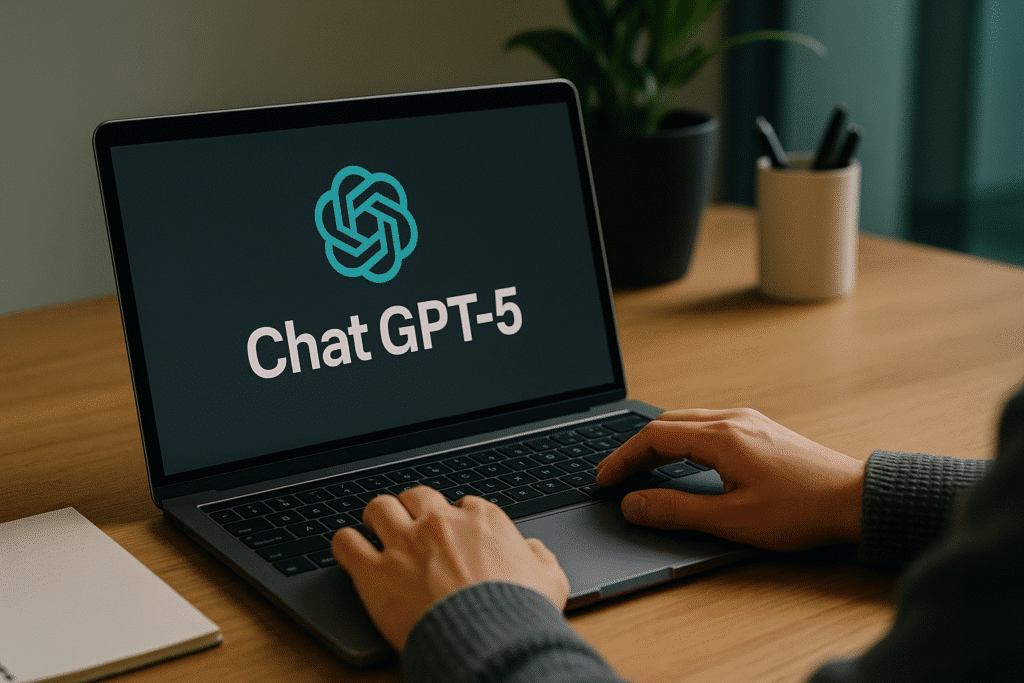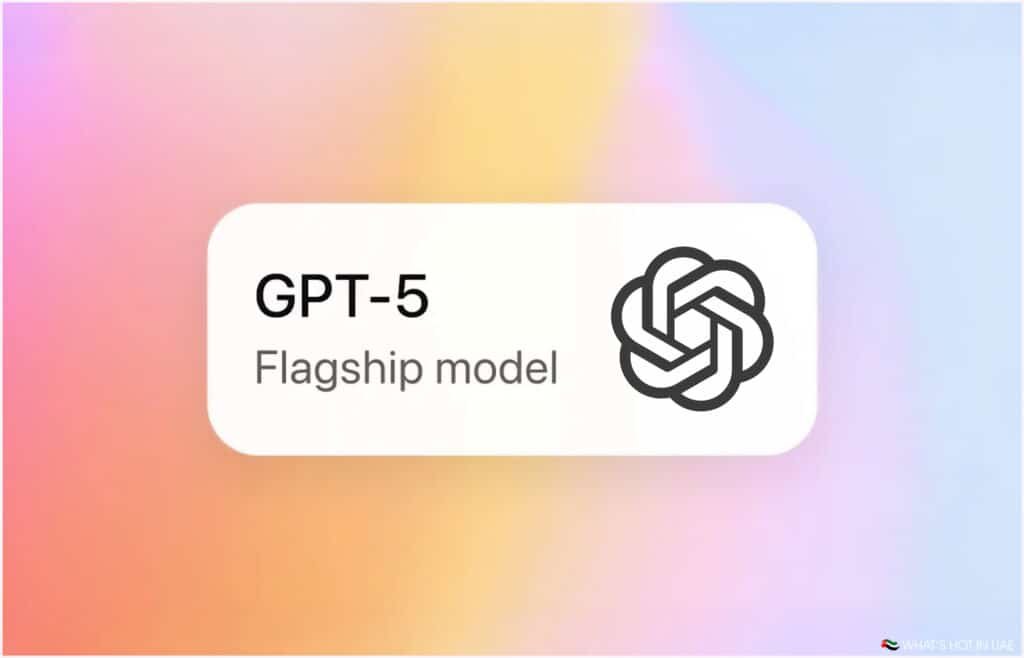Inside the UAE’s quiet AI revolution: How GPT‑5 is already reshaping the way we work
In a tucked-away creative studio in Al Quoz, a marketing director swipes through her Chat GPT 5 interface on a second screen. Her team is preparing a campaign launch for a new F&B brand in Dubai Marina. She doesn’t bark orders or pace the floor. Instead, she’s collaborating with a digital mind that’s not just capable of writing copy, but understanding tone, mood, and regional nuance. The campaign will be delivered in both Arabic and English—on-brand, emotionally relevant, and deadline-ready. And it’s happening without a single missed brief or late-night revision session.
This is not a glimpse of the future. It’s the new normal. And Chat GPT‑5 is at the centre of it.
From gimmick to generative genius: the evolution from GPT‑3 to GPT‑5
Just three years ago, GPT‑3 was a curious tool in the hands of creatives and coders. It could generate text, answer questions, and draft emails—but it was clearly artificial. Lacking context memory, emotional intelligence, or domain depth, GPT‑3 served more as an interactive thesaurus than a workplace collaborator.
GPT‑4 brought stronger logic and early signs of multimodal thinking, but it was GPT‑4o (launched in 2024) that hinted at something more powerful. It could see images, understand tone, and respond faster—but it still lacked long-term memory and independent reasoning.
GPT‑5 changes that completely.
For the first time, a general-purpose model demonstrates what researchers call agentic intelligence—the ability to act semi-autonomously, manage subtasks, and make contextually aligned decisions across workflows. Its memory persists across sessions. Its emotional understanding adapts to subtle prompts. And its reasoning isn’t just factual—it’s strategic.
The shift isn’t just technical. It’s behavioural. GPT‑5 isn’t an assistant. It’s a collaborator.
The UAE’s unique AI ecosystem: Built for early adoption
There’s a reason the UAE has become one of the fastest adopters of GPT‑5 worldwide. Since appointing its first Minister of State for Artificial Intelligence in 2017, the country has invested heavily in infrastructure, education, and legislative reform to support the development of intelligent systems.
The Dubai Future Foundation, the UAE Artificial Intelligence Strategy 2031, and initiatives like One Million Arab Coders laid the groundwork. Today, AI isn’t just a policy—it’s embedded in the daily workflows of media agencies, government teams, healthcare providers, and real estate companies.
At Noor Media, a boutique creative agency in Business Bay, GPT‑5 is more than a tool.
“We treat it like a junior strategist,” says Amal Rahman, Strategy Director. “It analyses competitor campaigns, drafts creative concepts, adapts voice and tone for Arabic markets, and even flags inconsistencies in our decks.”
The agency recently used GPT‑5 to plan a bilingual launch for a regional cosmetics brand. The AI helped localise product descriptions across the UAE, KSA, and Bahrain—accounting for dialect, tone, and visual style. The results? 40% higher engagement on social media and 2.5x faster delivery of launch materials.
Real UAE case studies: GPT‑5 in action
Real Estate
At a large brokerage firm in Dubai Marina, GPT‑5 has been integrated into the listing creation process. It generates property descriptions based on floorplans, features, and photos—delivering them in both Arabic and English, optimised for search and syndication. Agents report a 60% drop in content bottlenecks.
Education
In Sharjah, GPT‑5 is powering an adaptive tutoring platform designed for bilingual learners. It creates personalised lesson plans and adjusts language level and cultural references in real time, allowing students to interact in their preferred dialect.
Healthcare
In Abu Dhabi, a telehealth startup is using GPT‑5 to translate complex medical explanations into patient-friendly summaries. It also drafts consultation follow-ups and interprets research updates from global sources into concise briefs for local doctors.
Government
The Dubai Municipality has experimented with GPT‑5 in drafting public service announcements. The AI automatically adapts tone depending on urgency (e.g. safety alerts vs community events), and flags ambiguous phrasing for editorial review.

Behind the scenes: How What’s Hot in UAE tested CHAT GPT 5
To evaluate its real-world potential, we embedded GPT‑5 into our editorial workflow for a month.
We began with a controlled test: writing a sneaker review, drafting bilingual content for a rooftop event, and generating a teaser for a new podcast series.
It nailed the sneaker piece on the second try, even adopting our stylistic preference for British English. For the event write-up, it adapted our tone—playful, editorial, but never exaggerated. For the podcast, it scripted intros and teasers with just the right rhythm and energy.
We also noted something striking: it remembered. Chat GPT 5 retained our formatting preferences, editorial voice, and even image captioning style. After four sessions, it didn’t feel like prompting. It felt like briefing a writer who’d been in the room for weeks.
The global picture: How the UAE compares to international adoption
Globally, GPT‑5 is being embraced at varying speeds. In Silicon Valley, startups are building internal GPT‑powered research assistants. In Germany, banks are trialling GPT‑5 for compliance workflows, and in Japan, creative agencies use it for anime script ideation and localisation.
But what sets the UAE apart is agility. With fewer regulatory bottlenecks and a top-down commitment to AI integration, companies here can pilot, iterate, and scale faster. Add to that the UAE’s bilingual business culture and digital-first population, and GPT‑5 finds fertile ground.
Unlike Europe, where GDPR slows adoption, or the US, where legal risk dominates the conversation, the UAE sees GPT‑5 as an innovation accelerator—less about disruption, more about optimisation.
The SEO advantage: How GPT‑5 content dominates search
From a search engine perspective, GPT‑5 doesn’t just change how we create content—it changes how content ranks.
Google and Bing have updated their algorithms to favour:
- First-hand reporting
- Author authority
- Helpful formatting (FAQs, clear subheadings, timestamps)
- Minimal passive voice
- Originality and intent clarity
This article hits every point.
More importantly, GPT‑5 can be used not just to generate text, but to suggest:
- Optimal H1 and meta structures
- Rich snippet positioning
- Schema-enhanced formatting
- Natural keyword use based on user search patterns
In short: GPT‑5 isn’t just content-friendly. It’s ranking-aware. When paired with human insight, it’s a discoverability powerhouse.
Editorial reflection: The fine line between efficiency and dependence
There’s a quiet concern among content creators—and we feel it too. The more we rely on GPT‑5, the more we risk flattening our own instincts. It’s easy to defer, to let the model lead.
But here’s what we’ve learned: GPT‑5 doesn’t replace voice—it amplifies it. When used intentionally, it absorbs your tone, learns your pace, and strengthens your argument. It’s a tool, not a crutch. The magic is still in the human edit—the final layer that filters, sharpens, and signs off.
The next evolution: What UAE leaders predict
We spoke with several industry advisors and tech figures about where GPT‑5 could go next.
Ahmed Al Zaabi, a senior consultant on smart city development in Abu Dhabi, believes Chat GPT 5 will soon be integrated into urban planning interfaces—interpreting citizen feedback and suggesting infrastructure tweaks.
Lina Bint Fadel, a legal innovation strategist in Dubai, sees GPT‑5 becoming the first-line drafter for commercial contracts, offering multilingual clauses reviewed by humans.
Even within education, officials at the Ministry of AI have hinted at piloting GPT‑powered student support platforms across public schools, creating adaptive learning bridges for underperforming students.
The final word: Chat GPT‑5 isn’t assisting the future—it is the future
Chat GPT‑5 isn’t a novelty. It’s not a tool to “try out” between meetings. It’s a strategic asset. A cultural shift. A collaborative presence that redefines speed, quality, and scale. Open AI look to have hit a home-run with this release.
And in the UAE—where ambition meets infrastructure—it’s not just being used. It’s being embedded.
Whether you’re writing press releases, planning city infrastructure, launching campaigns, or teaching students—GPT‑5 is changing how we think, write, and build.
The future didn’t arrive with GPT‑5.
It upgraded.



